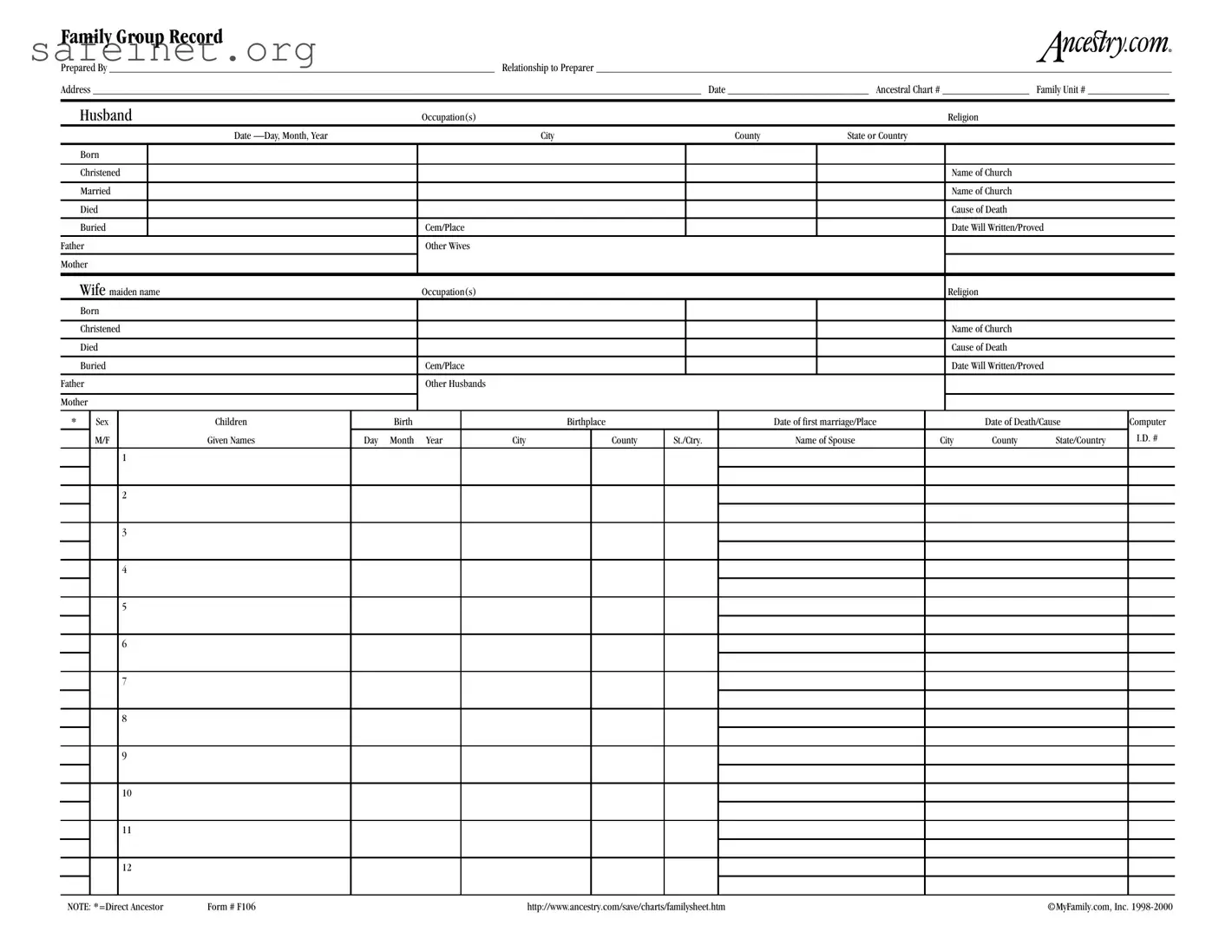What is the Family Group Record form used for?
The Family Group Record form serves as a structured way to organize and document information about a family unit. It helps individuals gather crucial details such as names, dates of birth, marriages, and deaths, as well as relationships among family members. Collecting this information can be invaluable for genealogical research and preserving family history.
What information is typically included in the Family Group Record?
A comprehensive Family Group Record includes various details. It captures the names of the husband and wife, their occupations, religious affiliations, and significant life events such as births, marriages, and deaths. It also collects information about children, including their names, birth dates, and places, alongside historical data like causes of death and burial locations. This structured format ensures that relationships and lineage are clearly documented.
How can I obtain a blank Family Group Record form?
You can easily find a blank Family Group Record form online. Websites dedicated to genealogy, such as Ancestry.com, often provide printable versions that you can use. Just search for the Family Group Record on these platforms, and you should have access to downloadable templates that fit your needs.
Is there any specific way to fill out the Family Group Record form?
Filling out the Family Group Record requires attention to detail. Start by entering the names of the primary family members—the husband and wife. Next, fill in their relevant information, such as birth details and marriage dates. When listing children, ensure you include their relationships accurately, as well as their individual details. Consistency in formats, especially with dates and places, enhances clarity. The more thorough you are, the more useful the record will become for you and future generations.
Why is it important to include details like religious affiliations and occupations?
Including religious affiliations and occupations enriches the family history narrative. These details reflect the context of your ancestors' lives and can influence family identity and heritage. They also help researchers connect with broader historical trends and events that may have impacted the family. Understanding this context can provide a deeper appreciation of ancestry and lineage.

